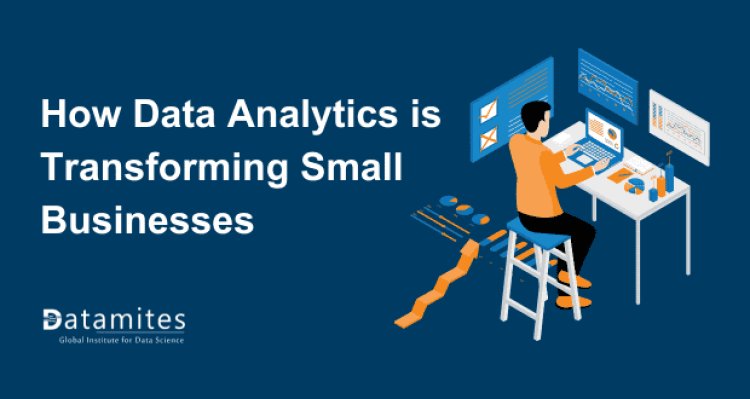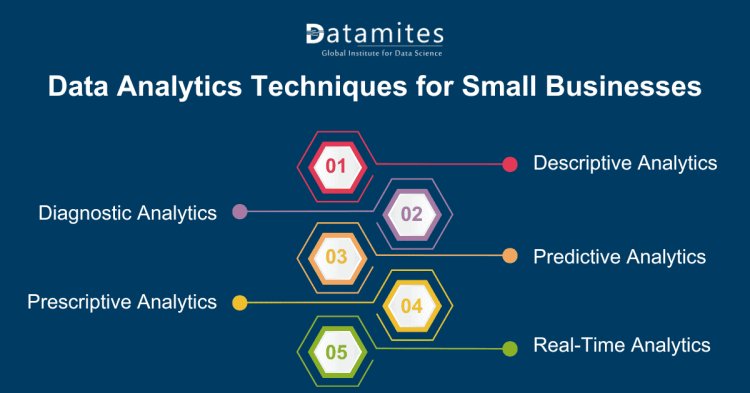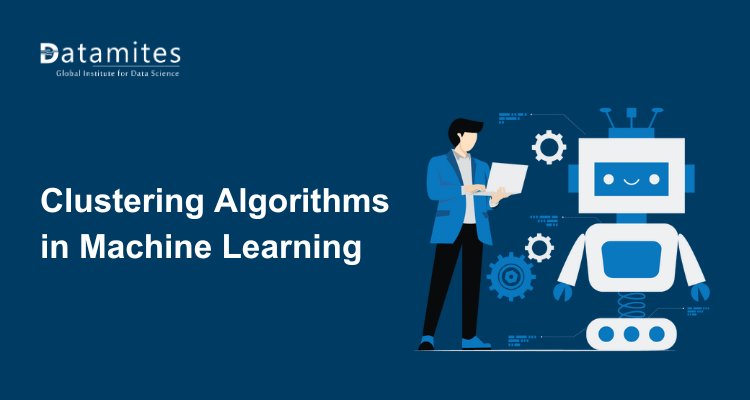How Data Analytics is Transforming Small Businesses

In today's digital age, data is essential for businesses of all sizes, especially small ones. Data analytics empowers small businesses to make informed decisions and compete effectively with larger corporations. As data analytics tools and training become more accessible, small business owners are leveraging this technology to improve operational efficiency, enhance customer satisfaction, and increase profitability. This blog post explores how data analytics is transforming small businesses, the techniques involved, and best practices for success.
The Importance of Data Analytics for Small Businesses
Data analytics offers a treasure trove of insights that can help small businesses thrive in a competitive landscape. The importance of data analytics cannot be overstated; it provides the foundation for strategic decision-making. Here’s why data analytics is essential for small businesses:
- Informed Decision-Making: With data analytics, small business owners can make informed decisions rather than relying on gut feelings. Analyzing past performance, customer behavior, and market trends can lead to better strategies.
- Cost Reduction: Data analytics helps identify areas where costs can be reduced without sacrificing quality. By examining operational data, businesses can streamline processes and eliminate inefficiencies.
Moreover, small businesses often face challenges related to limited resources. Data analytics enables these businesses to optimize their resources effectively. By using data to drive strategies, small businesses can compete with larger corporations, leveling the playing field.
How Can Data Analytics Help Small Businesses
Data analytics provides various benefits that can fundamentally change how small businesses operate. Here are several ways it can assist in their growth and sustainability:
1. Improved Decision-Making
Data analytics enables small businesses to make data-driven decisions by analyzing customer behavior, sales trends, and market performance. This leads to more informed choices regarding product offerings, pricing, and marketing strategies.
2. Customer Insights and Personalization
By understanding customer preferences and purchasing patterns, businesses can tailor their offerings and marketing campaigns to meet customer needs, improving satisfaction and increasing sales.
3. Cost Efficiency
Analytics can help identify inefficiencies in operations, such as overstocking or wasted resources, allowing small businesses to optimize inventory management and reduce operational costs.
4. Enhanced Marketing Effectiveness
Tracking the success of marketing campaigns helps small businesses allocate their budget more effectively by focusing on the strategies that deliver the highest return on investment (ROI).
5. Competitive Advantage
Leveraging data on market trends and competitor performance allows small businesses to stay ahead of the competition by anticipating market shifts and responding quickly.
6. Financial Planning and Forecasting
Analyzing historical sales data helps businesses predict future revenues and expenses more accurately, allowing for better budgeting and cash flow management.
These insights empower small businesses to operate more efficiently and stay competitive.
Refer these articles:
- Essential Tools for Data Analysts
- Key Skills Every Data Analyst Needs
- Data Analyst vs. Data Scientist

Types of Data Analytics Techniques Used by Small Businesses
Small businesses are using data analytics to improve decisions and operations. Key techniques include:
1. Descriptive Analytics: Understanding the Past
Descriptive analytics focuses on summarizing historical data to uncover patterns and insights. This technique helps small businesses understand what has happened in the past and provides context for current operations. By analyzing historical data, businesses can identify trends, measure performance, and understand customer behavior.
Key Features:
- Data Aggregation: Compiles and summarizes large volumes of data into meaningful information.
- Performance Measurement: Evaluates the effectiveness of marketing campaigns, sales initiatives, and operational processes.
Applications:
- Sales Reports: By analyzing sales data, small businesses can determine which products or services performed well over specific periods.
- Customer Feedback Analysis: Surveys and reviews can be aggregated to identify common themes and areas for improvement.
Benefits:
- Guides strategic planning by identifying successes and shortcomings.
- Offers insights into customer preferences and buying behavior.
2. Diagnostic Analytics: Uncovering Causes
While descriptive analytics reveals what has happened, diagnostic analytics seeks to explain why it happened. This technique delves deeper into the data to identify relationships, correlations, and underlying causes of specific outcomes. Small businesses can use diagnostic analytics to investigate issues and determine root causes.
Key Features:
- Root Cause Analysis: Identifies the factors contributing to specific events or trends.
- Correlation Identification: Determines the relationships between different data sets.
Applications:
- Sales Decline Investigation: If sales drop, diagnostic analytics can analyze factors such as seasonality, marketing efforts, or customer feedback to identify potential causes.
- Website Performance Evaluation: Examining traffic patterns and user behavior can help understand why certain pages may not be performing well.
Benefits:
- Provides clarity on issues that may impact performance, enabling businesses to make targeted improvements.
- Helps optimize marketing strategies by understanding customer reactions and preferences.
3. Predictive Analytics: Forecasting Future Trends
Predictive analytics employs statistical algorithms and machine learning methods to anticipate future events by analyzing historical data. This technique enables small businesses to anticipate customer behavior, sales trends, and market dynamics. By understanding what might happen in the future, businesses can make proactive decisions and allocate resources effectively.
Key Features:
- Modeling: Creates models to predict future outcomes based on historical data patterns.
- Scenario Analysis: Evaluates different scenarios to understand potential impacts on the business.
Applications:
- Customer Segmentation: Predictive analytics can identify which customer segments are most likely to respond to marketing campaigns, helping to tailor strategies accordingly.
- Inventory Management: By forecasting demand, businesses can optimize inventory levels and reduce carrying costs.
Benefits:
- Enhances decision-making by providing a data-driven basis for future planning.
- Reduces risks associated with uncertainty by allowing businesses to prepare for various outcomes.
4. Prescriptive Analytics: Guiding Decisions
Prescriptive analytics takes it a step further than prediction by providing recommendations for actions derived from data analysis.This technique uses algorithms to analyze data and suggest optimal solutions to business challenges. For small businesses, prescriptive analytics can enhance decision-making processes by providing actionable insights.
Key Features:
- Optimization Algorithms: Evaluates multiple scenarios to recommend the best course of action.
- Decision Support: Offers suggestions based on analytical insights.
Applications:
- Pricing Strategies: Prescriptive analytics can help determine the optimal price points for products based on market conditions and competitor pricing.
- Marketing Campaign Optimization: This technique can suggest the best marketing channels and strategies to maximize return on investment.
Benefits:
- Helps small businesses make informed decisions that align with their goals and resources.
- Increases efficiency by recommending data-driven actions, reducing trial and error.
5. Real-Time Analytics: Instant Insights
Real-time analytics involves analyzing data as it is generated, allowing small businesses to make immediate decisions based on the most current information available. This technique is particularly beneficial for industries that require quick responses, such as retail and hospitality.
Key Features:
- Immediate Data Processing: Processes data instantly to provide up-to-the-minute insights.
- Alerts and Notifications: Sends real-time alerts based on predefined criteria, enabling swift action.
Applications:
- Customer Interaction Monitoring: Businesses can analyze customer interactions on their websites or social media in real-time, allowing for immediate engagement.
- Operational Monitoring: Real-time analytics can help track inventory levels or sales activity, enabling timely restocking or adjustments.
Benefits:
- Facilitates agile decision-making, allowing businesses to respond quickly to changing conditions.
- Enhances customer satisfaction by enabling prompt service and support.
Utilizing data analytics techniques can significantly benefit small businesses by enhancing their understanding of past performance, identifying issues, predicting trends, and enabling informed decision-making. By leveraging these analytics, small business owners can gain valuable insights and optimize their operations. Additionally, investing in data analytics skills training equips them with essential competencies needed to remain competitive in today’s data-driven landscape.
Refer these articles:
Best Data Analytics Tools for Small Businesses
Choosing the right data analytics tools is crucial for small businesses. Here are some top options available:
Google Analytics
- Features: Tracks website traffic and user behavior.
- Benefits: Monitors page views, bounce rates, and conversion rates, while identifying traffic sources and demographics.
Tableau
- Features: A robust data visualization tool designed for developing interactive dashboards and reports.
- Benefits: Customizable dashboards and user-friendly drag-and-drop interface for visualizing complex data.
Microsoft Power BI
- Features: Offers interactive visualizations and seamlessly integrates with other Microsoft products.
- Benefits: Allows data analysis from multiple sources and easy sharing of reports with team members.
Zoho Analytics
- Features: Comprehensive suite of analytics tools with extensive reporting options.
- Benefits: Automates report generation and leverages AI-driven insights for better decision-making.
By choosing the right tools, small businesses can effectively utilize their data to drive growth. Enrolling in a data analytics certification course can further enhance proficiency in using these tools.
Data Analytics Challenges Faced by Small Businesses and How to Overcome Them
While data analytics presents numerous opportunities, small businesses also face challenges when implementing these strategies. Recognizing these hurdles and addressing them proactively is crucial for success. Here are several typical challenges along with their corresponding solutions:
Limited Budget and Resources
- Challenge: Small businesses frequently do not have the financial or human resources to invest in sophisticated analytics tools and expertise.
- Solution: Start with affordable tools that offer free trials or lower-tier pricing, such as Google Analytics or Zoho Analytics. Consider leveraging online courses and tutorials to build in-house expertise.
2. Data Quality and Integration
- Challenge:Inconsistent, incomplete, or inaccurate data can result in unreliable insights, and integrating data from various sources adds to the complexity.
- Solution: Implement data cleaning procedures and set standards for data entry. Use tools that offer data integration capabilities to streamline the process, ensuring a single source of truth.
3. Lack of Expertise
- Challenge: Many small businesses lack employees with data analytics expertise, making it difficult to interpret data effectively.
- Solution: Invest in training for existing staff or consider hiring freelance data analysts for specific projects. Utilizing user-friendly analytics tools can also help non-experts draw insights.
4. Data Security and Privacy Concerns
- Challenge: Handling customer data poses risks related to privacy and security, especially with regulations like GDPR and CCPA.
- Solution: Implement robust data security measures, such as encryption and access controls, and stay up-to-date on data protection regulations to ensure compliance and strengthen customer trust.
5. Difficulty in Identifying Relevant Metrics
- Challenge: Small businesses may struggle to determine which metrics are most relevant to their goals, leading to analysis paralysis.
- Solution: Define clear business objectives first, then identify key performance indicators (KPIs) that align with those objectives. Focus on a few critical metrics rather than trying to track everything.
6. Resistance to Change
- Challenge: Employees may resist adopting data-driven decision-making, preferring traditional methods.
- Solution: Cultivate a data-driven culture by showcasing the value of data analytics through impactful success stories. Offer training and support to facilitate the transition and foster acceptance.
7. Overwhelming Amount of Data
- Challenge: The sheer volume of data available can be overwhelming, making it hard to find actionable insights.
- Solution: Use tools that allow for effective data visualization and prioritization. Focus on specific datasets that directly relate to business goals to reduce clutter.
By actively tackling these challenges, small businesses can fully leverage data analytics to fuel their growth.
Refer these articles:
- Data Analyst Career Scope in Hyderabad
- How to Become a Data Analyst in Pune
- Data Analyst Course Fee in Chennai
Best Practices in Data Analytics for Small Businesses
To effectively implement data analytics, small businesses should adopt best practices that ensure successful outcomes.Here are several important practices to keep in mind:
Define Clear Objectives
Establish specific business goals and key performance indicators (KPIs) to guide data analysis. This helps focus efforts on relevant metrics that align with strategic objectives.
Invest in Quality Data
Ensure data accuracy and consistency by implementing robust data collection and management practices. Regularly clean and refresh datasets to uphold their quality.
Choose the Right Tools
Select user-friendly analytics tools that fit your budget and skill level. Consider tools like Google Analytics, Tableau, or Microsoft Power BI that cater to small business needs.
Focus on Visualization
Utilize data visualization techniques to make complex data more accessible. Clear and engaging visuals help communicate insights effectively to stakeholders.
Encourage a Data-Driven Culture
Foster a culture that values data-driven decision-making. Provide training and resources to employees, encouraging them to use data in their daily tasks.
Regularly Review and Update Strategies
Continuously analyze data and review outcomes to adjust strategies as needed. Regular evaluations assist in pinpointing trends and areas that need enhancement.
By following these best practices, small businesses can ensure they leverage data analytics effectively and drive long-term success.
Data analytics is revolutionizing the landscape for small businesses, providing them with invaluable insights that drive growth and enhance decision-making. By implementing data analytics training and following best practices, small businesses can unlock their full potential. With the right tools and strategies, they can thrive in a competitive environment.
DataMites Institute is a leading provider of professional training in data science and analytics. Their extensive Certified Data Analytics Course is crafted to provide learners with the fundamental skills needed for interpreting and analyzing data. In partnership with esteemed organizations like IABAC and NASSCOM FutureSkills, DataMites offers industry-recognized certifications. The institute also provides a diverse array of courses, including Artificial Intelligence, Data Science, Machine Learning, and Python Programming. Each program is thoughtfully crafted to meet the evolving demands of the tech industry, enhancing career prospects and technical expertise.





